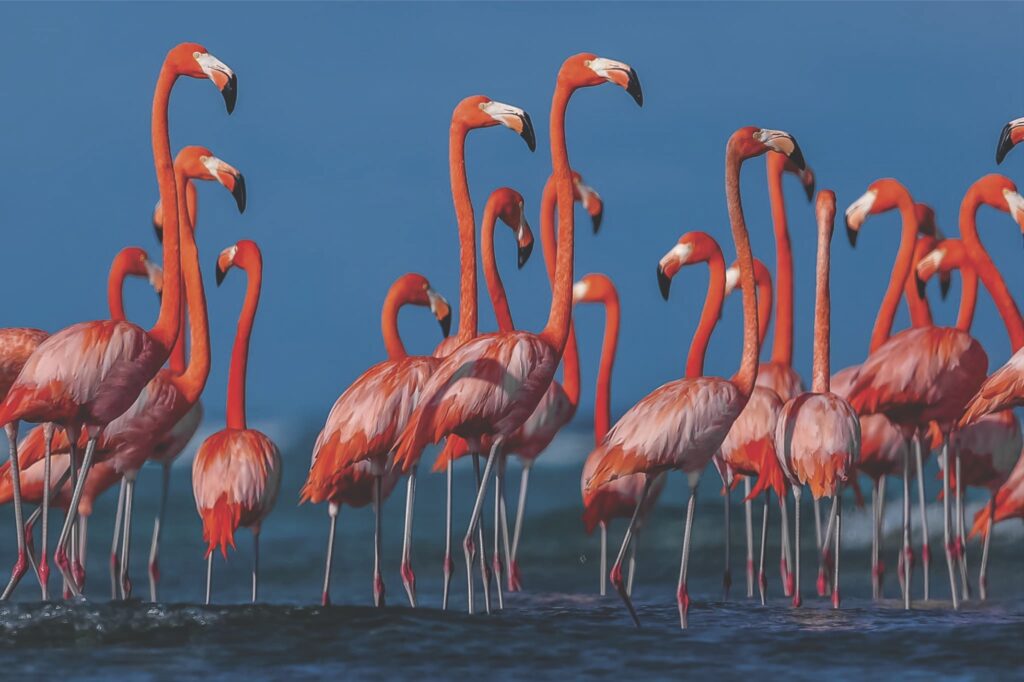Through His Lens: Rondel Smith Tells Nature’s Story from the Shores of Anegada

On the quiet, windswept island of Anegada—where the land seems to melt into the sea and wild beauty stretches out in every direction—Rondel Smith is using his camera to tell a story that is both intimate and urgent. He is not just a photographer. He is a witness, an interpreter of the wild, and a messenger for the fragile ecosystems that surround us.

What began as a simple love for the outdoors has evolved into a powerful tool for storytelling. Rondel identifies himself as a wildlife and nature photographer, but those labels only scratch the surface. His relationship with nature is rooted in experience. Long before he ever picked up a camera, he was a naturalist at heart. His days were spent on the water, along the coastline, beneath the waves. Nature was never something separate to be admired from a distance—it was, and still is, part of who he is.
“I was always outdoors,” he says. “I grew up surrounded by it. Fishing, diving, just being in the environment. That came first. Photography came later as a way to share the things I was already seeing, already living.”
He started small, using just his phone to capture the beauty around him. At first, the images were meant for friends—simple snapshots of his daily experiences. But as he shared more, the interest grew. People began to respond to what he saw, and more importantly, how he saw it. He soon moved on to a GoPro, and eventually to a professional camera. What never changed, however, was his intention—to show the world what he saw every day and to help others connect with the beauty and vulnerability of nature.
Photography is not Rondel’s full-time job, at least not yet. He still makes his living as a fisherman, another calling that keeps him in close connection with the natural world. But his camera is always close by, ready to capture a fleeting moment, an unexpected encounter, a story waiting to be told.
When asked to describe his approach to capturing nature, he pauses thoughtfully before answering.
“Nature is unpredictable. You can’t plan for everything. And I used to go out thinking I had to get a certain shot. But over time, I started to let go of that. I began to realise that beauty is everywhere—you just have to slow down and really look. Now I try to be present. I observe, I wait, and when something happens, I’m ready.”
That shift in mindset has allowed him to move beyond simply taking pictures and into the realm of storytelling. Every image Rondel creates holds meaning. It is not just about composition or lighting, but about the relationship between himself and the subject. He speaks of having an “experience” with the animals he photographs, of observing them enough to learn their behaviour and begin to understand them. That connection, he says, is what gives a photo its power.
“All my favourite shots have a story behind them. I can remember the moment, the feeling, the interaction. And that’s what I try to show in my work—that deeper layer of connection.”
He does not travel with heavy gear or carry an array of tools. In fact, Rondel believes that simplicity is part of what keeps him grounded. He brings his camera, of course, but what matters more is the mindset he carries into the field—one of curiosity, humility, and appreciation.
“When I go out, I go to appreciate what’s already there. I don’t force anything. I just try to be in tune with the environment and let it speak to me.”
Though he enjoys capturing still landscapes, his heart leans toward photographing wildlife in motion. He describes the challenge and beauty of freezing a moment that would otherwise be gone in a heartbeat—a bird taking flight, a stingray gliding just below the surface, the eyes of an iguana blinking in the sun. For him, motion tells stories that stillness cannot. And yet, he does not see one as better than the other.
“I think both are important. A good landscape tells you about a place, but an animal in motion tells you something about life, about energy, about survival. It’s all part of the same story.”
As his skills have grown, so too has his desire to do more with his work. Rondel has recently begun exploring underwater photography, investing in a specialised waterproof housing that allows him to take his camera beneath the surface. It is a more complex and demanding type of photography, requiring both technical skill and a sense of patience and calm. But the rewards, he says, are unlike anything else.
“Underwater photography is difficult. You’re moving, the current is moving, your subject is moving. But when you get it right—when you capture something that most people never get to see—it’s amazing. It opens up a whole new world.”
Yet his journey as a visual storyteller is not just about art or personal satisfaction. It is deeply rooted in a sense of responsibility. Spending so much time in nature has made Rondel acutely aware of how much is at risk, how quickly things are changing, and how urgent the need is to protect what remains.
“I’ve seen things change in just a few years. Habitats disappearing, animals behaving differently. It makes you think. It makes you realise how much of an impact we have. And that’s part of why I do this. I want people to see what we have before it’s gone. I want to raise awareness, even if it’s just in a small way.”
That sense of purpose runs through every photo he takes. For Rondel, photography is not just a creative outlet—it is a form of environmental advocacy, a way to give voice to the voiceless and help people reconnect with the natural world around them.
“I feel a responsibility, yes. I want my work to make people stop and think. To remember that we are part of this world, not separate from it. And that if we want future generations to enjoy the beauty we have now, we need to start protecting it.”
Looking to the future, Rondel sees his path evolving. While he will always have a camera in hand, he is beginning to explore wildlife videography as a way to reach audiences in a more emotional and intimate way. Video, he believes, has the power to tell stories that are layered and immersive, drawing people deeper into the experience.
“I’m not stepping away from photography, but I’m expanding. I want to bring more attention to the wildlife we have, especially here in the Virgin Islands. I think video can help people connect on a different level. It’s about making people feel something—not just see it.”
To young photographers in the Virgin Islands who might be inspired by his journey, Rondel’s advice is rooted in authenticity.
“Don’t chase the shot. Don’t try to imitate what you see online. Just go outside. Spend time in nature. Let it inspire you. The best stories come when you’re really connected to what you’re shooting.”
There are still places he dreams of photographing, species he hopes to capture, and projects he wants to bring to life. But for now, Rondel remains rooted in his home, letting the wind and tide guide his next move. His work is a gentle reminder that sometimes, the most powerful stories are the ones told slowly, with care, and with love for the world around us.
From the limestone flats of Anegada to the coral gardens beneath the sea, Rondel Smith’s journey is not just about images—it is about presence, perspective, and purpose. And through his lens, nature continues to speak. All we have to do is listen.
